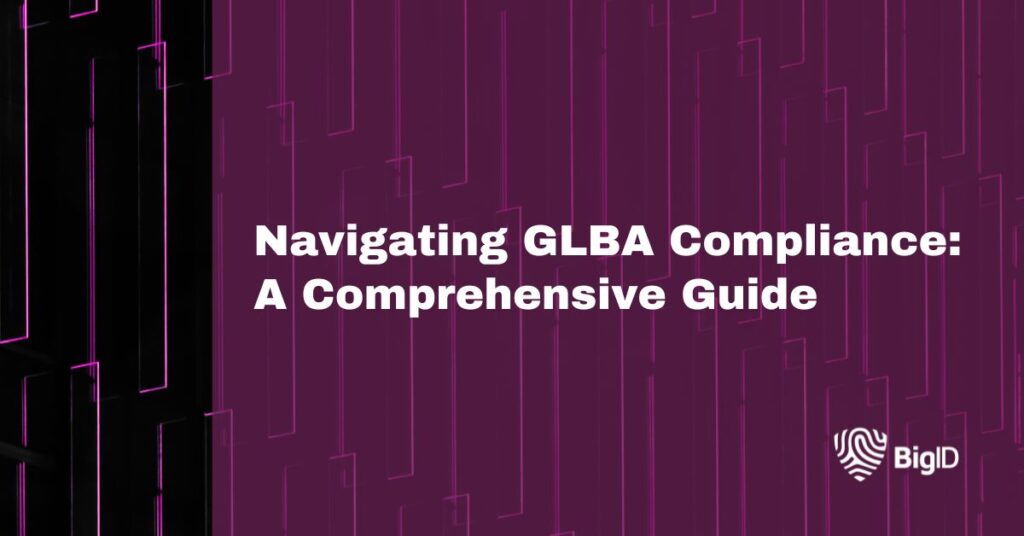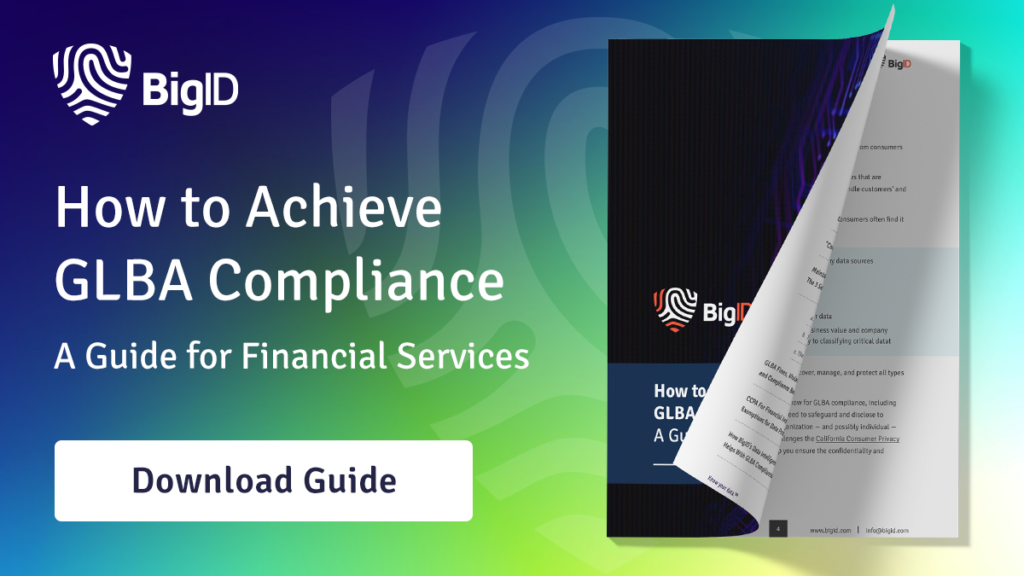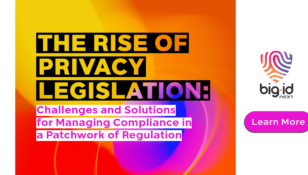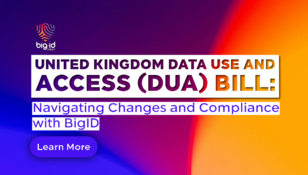Navigating GLBA Compliance: A Comprehensive Guide

In 2019, a financial institution was fined $1.5 million by the Federal Reserve Board for violating the GLBA’s data protection and privacy requirements. The institution failed to implement adequate security measures to protect customer data, leading to unauthorized access and disclosure of sensitive information.
In 2018, another financial institution was fined $1 million by the Consumer Financial Protection Bureau (CFPB) for similar violations of the GLBA’s data protection and privacy requirements. The institution failed to implement adequate controls to prevent unauthorized access to customer data, leading to a data breach that compromised the personal information of over 100,000 customers.
These instances highlight the importance of GLBA compliance and the potential consequences of non-compliance.
What is the The Gramm-Leach-Bliley Act (GLBA)?
GLBA compliance refers to adherence to the Gramm-Leach-Bliley Act, which is a federal law that requires financial institutions to safeguard the privacy and security of their customers’ personal financial information. The law applies to banks, securities firms, insurance companies, and other financial institutions that collect, use, and share personal financial information. GLBA compliance requires financial institutions to establish and maintain comprehensive information security programs that protect customer information from unauthorized access, use, or disclosure.
The law also requires financial institutions to provide customers with privacy notices that explain their information-sharing practices and to allow customers to opt-out of certain types of information sharing. GLBA compliance is enforced by various federal agencies, including the Federal Trade Commission (FTC), the Federal Reserve Board, and the Securities and Exchange Commission (SEC), among others.
Why is it important?
The Gramm-Leach-Bliley Act (GLBA) is important because it helps protect the privacy and security of consumers’ personal financial information. The GLBA requires financial institutions to implement measures that safeguard the confidentiality and integrity of customer data, including social security numbers, bank account numbers, credit card numbers, and other sensitive financial information. By requiring financial institutions to establish and maintain comprehensive information security programs, the GLBA helps ensure that customers’ personal financial information is protected from unauthorized access, use, or disclosure.
This helps reduce the risk of identity theft and financial fraud, which can cause significant harm to consumers. In addition, the GLBA requires financial institutions to provide customers with privacy notices that explain their information-sharing practices and to allow customers to opt-out of certain types of information sharing. This helps ensure that customers have control over how their personal financial information is used and shared by financial institutions.
The evolution of The Gramm-Leach-Bliley Act (GLBA)
Since its enactment in 1999, the Gramm-Leach-Bliley Act (GLBA) has undergone several changes and updates to address emerging privacy and security concerns related to consumer financial information. Here are some of the key changes to the GLBA over the years:
- Amendments to the Privacy Rule: In 2009, the Federal Trade Commission (FTC) issued amendments to the GLBA Privacy Rule, requiring financial institutions to provide consumers with more detailed and clearer privacy notices. The amendments also expanded the scope of the rule to include affiliates of financial institutions and required institutions to notify customers in the event of a breach of their personal information.
- Interagency Guidance on Response Programs for Unauthorized Access to Customer Information: In 2005, the federal banking agencies issued guidance on how financial institutions should respond to incidents of unauthorized access to customer information. This guidance established expectations for incident response plans and requirements for notifying customers, law enforcement, and regulators in the event of a breach.
- Implementation of the Safeguards Rule: In 2003, the FTC issued regulations to implement the GLBA Safeguards Rule, requiring financial institutions to develop and implement a comprehensive information security program. The regulations established specific requirements for the program, such as risk assessments, employee training, and oversight of service providers.
GLBA rules explained
The Gramm-Leach-Bliley Act (GLBA), also known as the Financial Modernization Act of 1999, is a United States federal law that regulates the handling of consumer financial information by financial institutions. The GLBA consists of several rules that financial institutions must follow to ensure the confidentiality and security of consumer financial information. Here are some of the key rules:
- Privacy rule: The GLBA privacy rule requires financial institutions to provide their customers with a privacy notice that explains the types of information that the institution collects, how it uses the information, and with whom it shares the information. Financial institutions must also provide customers with the opportunity to opt-out of the sharing of their information with certain third parties.
- Safeguards rule: The GLBA safeguards rule requires financial institutions to implement a comprehensive information security program to protect the confidentiality and security of customer information. The program must include administrative, technical, and physical safeguards to protect against unauthorized access, use, or disclosure of customer information.
- Pretexting protection rule: The GLBA pretexting protection rule prohibits individuals from obtaining customer information under false pretenses, such as by pretending to be the customer or a representative of the financial institution.
Penalties for non-compliance
The Gramm-Leach-Bliley Act (GLBA) imposes penalties for non-compliance, which can be severe for financial institutions that fail to adhere to the law’s requirements. The penalties for non-compliance include:
- Civil Penalties: The GLBA authorizes the Federal Trade Commission (FTC) to impose civil penalties on financial institutions that violate the law’s privacy and security requirements. The maximum penalty for each violation is $11,000.
- Criminal Penalties: The GLBA also includes criminal penalties for financial institutions that knowingly and willfully violate the law’s requirements. These penalties can include fines and imprisonment for up to five years.
- Reputation Damage: Non-compliance with the GLBA can also damage an organization’s reputation and erode consumer trust. This can have a significant impact on a financial institution’s bottom line, as customers may take their business elsewhere if they feel their privacy and security are not being adequately protected.

Examples of GLBA non-compliance
Here are some examples of GLBA non-compliance:
- Failure to Provide Privacy Notices: Financial institutions are required to provide customers with privacy notices that explain the types of personal information that the institution collects, how that information is used, and how it is shared. Non-compliance with this requirement can result in penalties and fines.
- Unauthorized Access to Customer Information: Financial institutions are required to establish appropriate safeguards to protect customer information from unauthorized access. If an institution fails to secure its systems or fails to properly authenticate users, it could lead to a data breach that exposes customer information.
- Inadequate Information Security Policies: The GLBA requires financial institutions to develop and implement information security policies that protect customer information. If an institution fails to develop adequate policies or fails to implement them effectively, it could result in a data breach and expose customer information.
- Failure to Train Employees: Financial institutions are required to train employees on how to comply with the GLBA’s privacy and security requirements. If an institution fails to provide adequate training, employees may inadvertently violate the law’s requirements, leading to penalties and fines.
- Inadequate Vendor Management: Financial institutions are required to ensure that vendors who have access to customer information are also complying with the GLBA’s privacy and security requirements. If an institution fails to adequately manage its vendors, it could result in a breach that exposes customer information.
Qualifications for GLBA exemption
GLBA exemptions refer to certain situations or entities that are exempted or excluded from the requirements of the Gramm-Leach-Bliley Act (GLBA). For example, GLBA exemptions may apply to certain types of financial institutions or activities, such as brokers or dealers that are regulated by the Securities and Exchange Commission (SEC), or certain activities related to insurance products. In addition, GLBA exemptions may also apply to certain types of information, such as publicly available information or information that is not covered under the GLBA’s definition of “nonpublic personal information.”
While certain entities or activities may be exempt from certain aspects of the GLBA, they may still be subject to other federal or state privacy and security regulations. Financial institutions should consult with legal and compliance professionals to ensure they understand the scope of GLBA exemptions and their obligations under other relevant laws and regulations.
How GLBA defines “customers” vs “consumers”
In the context of the Gramm-Leach-Bliley Act (GLBA), “customers” and “consumers” refer to different groups of individuals.
A customer is a person who has an ongoing relationship with a financial institution, such as a bank, credit union, or broker-dealer. A customer has provided personal information to the financial institution for the purpose of obtaining financial products or services, such as a checking account, credit card, or investment account. Customers are entitled to receive privacy notices from their financial institution that explain the institution’s information-sharing practices and give them the opportunity to opt-out of certain types of information sharing.
A consumer, on the other hand, is a broader category that includes not only customers but also individuals who have not yet established a relationship with a financial institution. For example, a consumer may be someone who has made an inquiry about a financial product or service but has not yet opened an account. Financial institutions are generally allowed to share information about consumers for certain purposes, such as marketing or fraud prevention, as long as they provide a clear and conspicuous notice of their information-sharing practices and allow consumers to opt-out of certain types of information sharing.
Leveraging the use of AI and machine learning
Artificial Intelligence (AI) and Machine Learning (ML) technologies can be leveraged by organizations to maintain GLBA compliance by enhancing their ability to detect and prevent unauthorized access to consumer financial information. Here are some ways in which AI and ML can be used:
- Risk Assessment: Organizations can use AI and ML to assess the risk associated with different types of customer data and transactions. By analyzing patterns in data access and usage, these technologies can help identify potential security threats and vulnerabilities.
- Fraud Detection: AI and ML can be used to detect fraudulent activities, such as unauthorized access to customer accounts or the use of stolen credentials. These technologies can analyze large amounts of data and identify anomalous behavior that may indicate fraud.
- Behavioral Biometrics: Behavioral biometrics can be used to authenticate customers and detect fraud by analyzing patterns in behavior, such as typing speed or mouse movements. These technologies can provide an additional layer of security to protect against unauthorized access to customer data.
- Data Analytics: AI and ML can be used to analyze large amounts of data and identify patterns that may indicate a breach or unauthorized access. These technologies can help organizations identify potential threats and take proactive measures to prevent them.
Ensure GLBA Compliance with BigID
BigID is a data intelligence platform for privacy, security, and governance that helps organizations achieve GLBA compliance by providing a range of tools and features that address the requirements of the law. Here are some ways in which BigID can help:
- Data Discovery and Inventory: BigID helps organizations discover and inventory their sensitive data, including financial information covered by the GLBA. This enables organizations to understand what data they have and where it is located, which is a critical first step in achieving compliance.
- Data Classification: BigID’s data classification capabilities help organizations identify and classify different types of data, including personal financial information covered by the GLBA. This enables organizations to apply appropriate controls to protect the data and comply with the law.
- Access Control: BigID’s Access Intelligence App manages access to sensitive data by providing capabilities such as data access policies, data access tracking, and role-based access control. These features help organizations ensure that only authorized personnel have access to GLBA-covered data.
- Data Subject Requests: The Data Deletion App utilizes automation and streamlined workflows to empower the organization to manage and process data subject requests, all under one platform.
- Privacy Impact Assessment: BigID’s Privacy Impact Assessment App conducts privacy impact assessments, which are required under the GLBA— allowing organizations to better assess the risks associated with their data processing activities and develop appropriate measures to mitigate those risks.
Schedule a 1:1 demo to learn more about how BigID can help your organization achieve compliance with GLBA.













